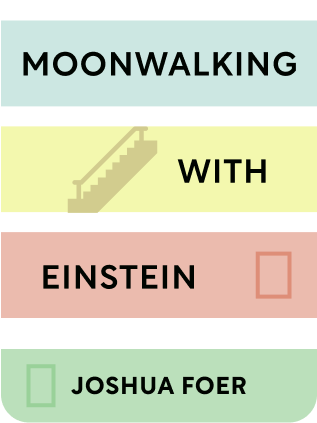

This article is an excerpt from the Shortform summary of "Moonwalking With Einstein" by Joshua Foer. Shortform has the world's best summaries of books you should be reading.
Like this article? Sign up for a free trial here .
What are the types of internal memory? How does internal memory work?
Internal memory is the memory from inside our heads. Humans have the ability to work with external memory, meaning we can use memory aids like books or notes to help us remember. But the different types of internal memory all work together to create an intricate system of memory.
Keep reading to find out more about the four types of internal memory.
Internal vs. External Memories
Memory exists outside of our brains, too. There are two different ways to store memories:
- Internally. Internal memories consist of the information individuals keep in their heads. There are several types of internal memory.
- Externally. External memories consist of memory aids such as books, calendars, phone books, and so on. External memory transcends our own lifetimes and allows us to share information in our memories with others. In modern times, people tend to rely on external memories rather than internal ones.
- An extreme version of an external memory is called lifelogging, in which you externally keep track of everything that happens to you. Lifelogger Gordon Bell wears a camera around his neck, records all his speech, and scans every piece of paper he reads. He stores the information on a hard drive and adds about a gigabyte per month.
An external memory can’t yet completely replace an internal one. Humans depend on several types of internal memory in their lives.
Types of Internal Memory
Science doesn’t fully understand how memory works yet, but it does know that our brains are a network of neurons, and an individual memory is a group of connections between neurons. This way, the several types of internal memory are connected.
Additionally, memories aren’t stored in any linear way; they’re stored in a web of associations. For example, thinking of the word “baker” would probably also make you think about bread, the smell of yeast, your favorite bakery, and so on.
To remember something consciously, we need a cue. For example, if you’re trying to remember what your friend’s car looks like, you might have to think more generally about your friend or about cars in order to “search” the web of associations that will eventually lead you to the memory of your friend’s car.
There are several different types of internal memories:
- Working. The working memory is in charge of whatever you’re currently focusing on. It’s a filter between your perception and your long term memory. It can only hold about five to nine different things at once.
- Long-term. The long-term memory stores things you need to remember for longer than a few moments.
- Declarative. Declarative memories are individual conscious memories. There are two types of declarative memories:
- Episodic memories are memories of experiences. They have a place and time attached to them. For example, the time you went surfing in Hawaii is an episodic memory.
- Semantic memories are memories of concepts and facts. For example, the fact that surfing is a water sport in which you stand on a board is a semantic memory.
- Nondeclarative. Nondeclarative memories are unconscious memories such as motor skills and habits. For example, riding a bike.
Whenever you think or make a memory, you physically change your brain. You can form new neurons or rearrange the neurons you already have. Additionally, it’s possible to improve your memory. While there are some people with naturally incredible memories, such as savants, anyone can improve their memory using memory techniques
The human memory evolved to be good at remembering images and places because these sorts of memories are important for survival. The brain is also naturally good at remembering things that it finds interesting, such as sex and humor, and things that form patterns, such as songs or rhyming poems.
Knowing the different types of internal memory can help you understand how different memories all work together to help form your identity.

———End of Preview———
Like what you just read? Read the rest of the world's best summary of Joshua Foer's "Moonwalking With Einstein" at Shortform .
Here's what you'll find in our full Moonwalking With Einstein summary :
- The memory techniques that took the author from novice to US memory champion in one year
- The 6 key types of memory we use everyday
- Why memory isn't just genetic, and how you can improve your memory with the right techniques






